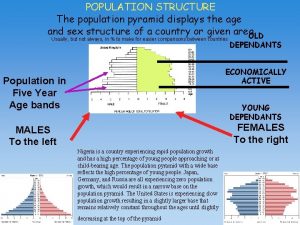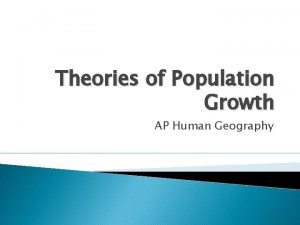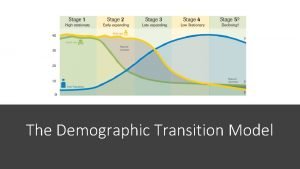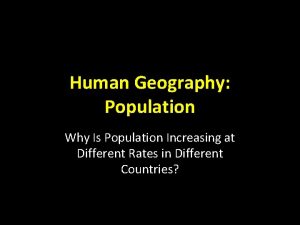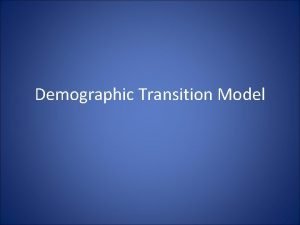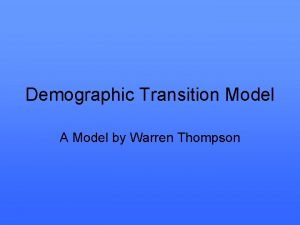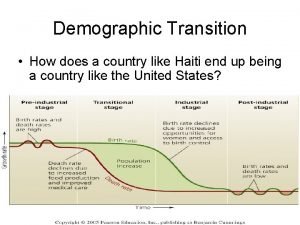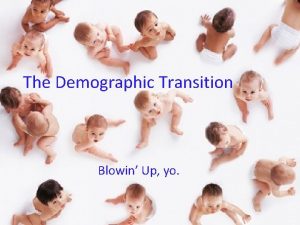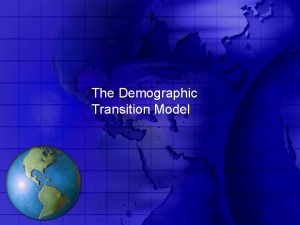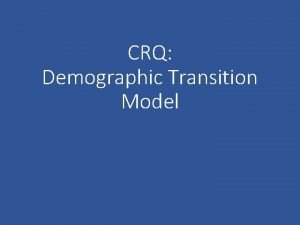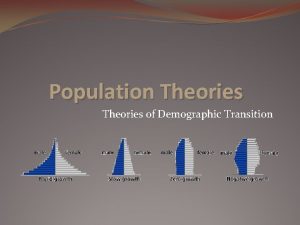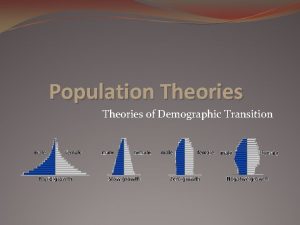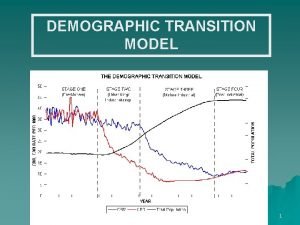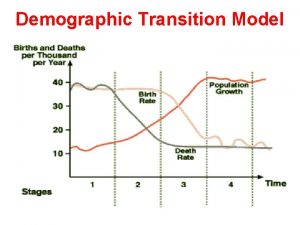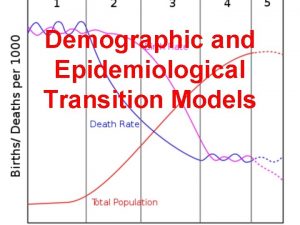Population Growth The Demographic Transition Model The Demographic












- Slides: 12

Population Growth The Demographic Transition Model

The Demographic Transition Model developed to try and explain the growth rate of the world’s population over time. � A population model that shows the main features of population change in more developed countries over time. �


Four stages of demographic transition Stage 1: A pre-industrial society (Rapidly expanding) � Reflects a traditional society ü High birth rate e. g. 35 per 1 000 ü High death rate e. g. 35 per 1 000 ü The natural increase in population is low.

Stage 2: A developing country (Expanding) Reflects improvements in medicine, sanitation and diet. ü Death rate decreases rapidly e. g. about 20 per 1 000 people ü Birth rate is still high e. g. about 30 per 1 000 people ü High rate of natural increase, population grows rapidly. �

Stage 3: A decline in the birth rate (Stationary) Reflects improvements in medicine, sanitation and diet. ü Birth rate drops sharply e. g. 20 per 1 000 people. ü Death rate drops further but less sharply to about 15 per 1 000 people. ü The rate of natural increase decreases, population continues to grow but at a slower rate. �

Stage 4: Zero population growth (Contracting) Birth rate remains low at about 16 per 1 000 people. � Death rate remains low at about 12 per 1 000 people. � Large population but the population growth or natural increase in population is slow. Population is shrinking � Negative growth rate may occur if birth rate decrease. �

Demographic Transition Model and Population Pyramids

Stage 1 Both birth rate and death rate are high. � Birth and death rates are high because: ü lack of family planning ü Children are needed for farming and looking after elderly ü People are not well educated ü Health care and sanitation are poor �

Stage 2 � Birth rate is still very high and death rate is decreasing rapidly. � Death rate is decreases because: ü Education, healthcare, water supply and sanitation improve dramatically ü Farming techniques improve � Birth rate is high because people prefer large families

Stage 3 � Birth rate is decreasing rapidly but death rate is decreasing slowly. � Birth rate and death rate decline because standard of living is improved and children are not a necessity like before.

Stage 4 � Both birth rate and death rate are slowly decreasing. � Birth rate is low because: ü Family planning, good health and improving status of women. � Dearth rate is low because of good health care.
 Population pyramid stage 1
Population pyramid stage 1 Ernst ravenstein ap human geography
Ernst ravenstein ap human geography Uk demographic transition model
Uk demographic transition model Demographic transition model
Demographic transition model Demographic transition model ap human geography
Demographic transition model ap human geography Denmark dtm stage
Denmark dtm stage Warren thompson demographer
Warren thompson demographer Haiti dtm stage
Haiti dtm stage Demographic transition theory
Demographic transition theory Exclave ap human geography definition
Exclave ap human geography definition Demographic transition model worksheet
Demographic transition model worksheet Demographic transition model song
Demographic transition model song Where are the holes in the ozone layer located
Where are the holes in the ozone layer located
